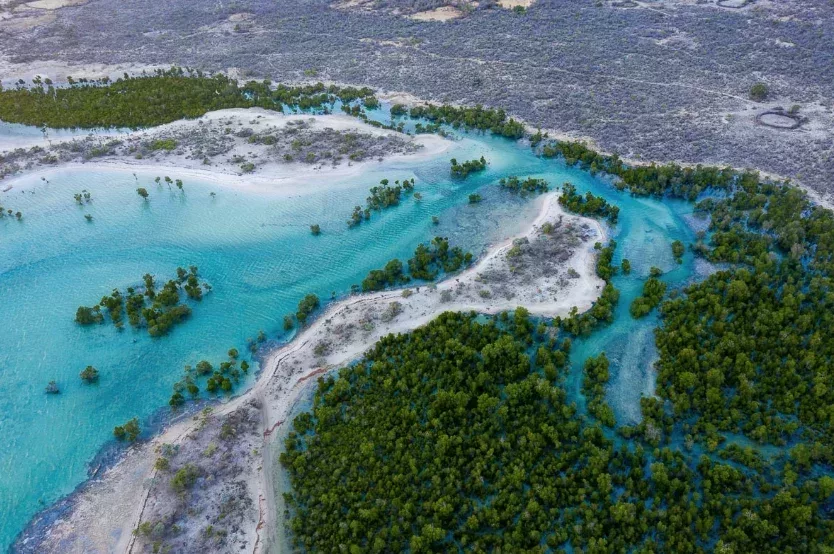The Tahiry Honko project is helping to tackle climate breakdown and build community resilience by restoring and protecting mangrove forests.
A celebration at the heart of a protected mangrove forest in Madagascar this week marked the formal inauguration of the world’s largest mangrove carbon conservation project. The forest, situated in the Bay of Assassins in the remote southwest of the country, is protected and managed by communities from surrounding villages within the Velondriake Locally Managed Marine Area (LMMA).
Mangroves – or blue forests – are among the most productive and valuable habitats on Earth. They underpin coastal fisheries, provide vital sources of fuel wood and timber, protect coastal people from extreme weather, and act as a key natural climate solution by sequestering globally significant amounts of carbon dioxide.
Despite their huge value, mangroves are being deforested at an alarming rate. Unabated, mangrove destruction will deprive tens of millions of people of their livelihoods and undermine their wellbeing. It will exacerbate the global climate emergency we now face, while taking away what vital natural protection coastal people have against it.
Over the last 15 years, Blue Ventures has worked with coastal communities in Madagascar to explore new ways to derive benefits from protecting mangroves. In particular by capturing the value of mangrove carbon sequestration, as well as fish and timber production.
“Coastal communities in Madagascar are some of the most vulnerable on earth to the impacts of global climate breakdown,” said Lalao Aigrette, Blue Ventures’ Blue Forests Programme Lead in Madagascar. “These communities have shown remarkable leadership in pioneering this new approach to mangrove conservation.”
By protecting forests within the bay from deforestation, local communities are able to safeguard the vast amount of carbon stored in the mangrove vegetation and sediments – so called ‘blue carbon’ – that is released as CO2 when mangrove forests are destroyed. These avoided emissions have a value on the voluntary carbon market – a value that has now been realised by formal validation of the communities’ efforts by the Plan Vivo Standard, enabling the project to sell verified blue carbon credits.
The project, called Tahiry Honko, which means ‘preserving mangroves’ in the local Vezo dialect, promotes locally led conservation, reforestation and sustainable use of over 1,200 hectares of mangroves, alongside initiatives for building alternative livelihoods, including sea cucumber and seaweed farming and mangrove beekeeping.
“We inherited these mangroves from our ancestors, providing materials we need to survive. I want to ensure we can pass these forests on to our children” said Joel François, member of the Velondriake LMMA Association.
By avoiding emissions of over 1,300 tonnes of carbon dioxide per year, Tahiry Honko will provide a regular income through carbon credit sales to support local management of the marine protected area over the next twenty years. Funds will also help finance community development including the construction of vital infrastructure and supporting healthcare and education.
“We’re now supporting communities and partner organisations to help share this approach at priority mangrove conservation sites elsewhere in Madagascar and further afield,” said Aigrette.
Source Blue Ventures website

